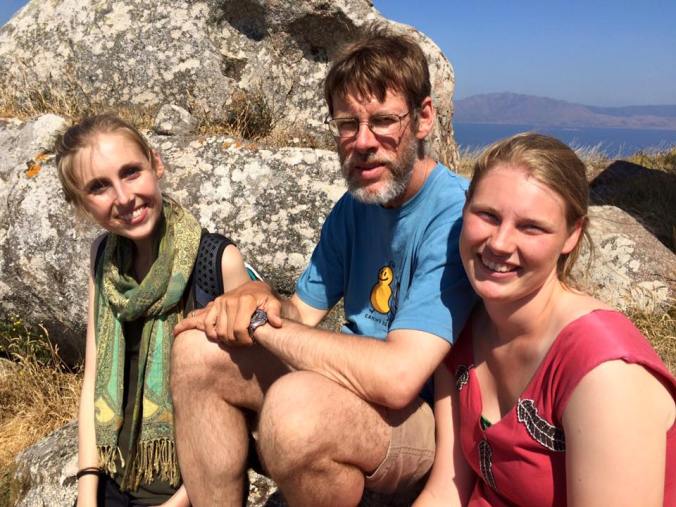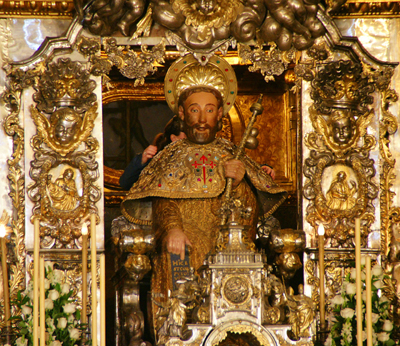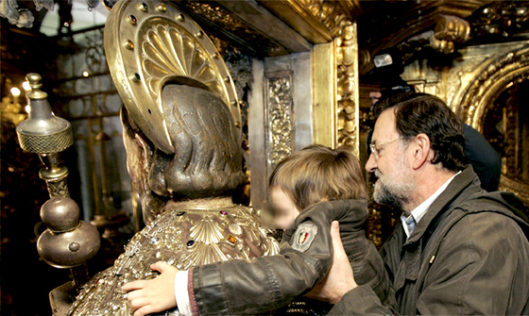Months ago, I promised to write another post– this one about what happened when the Fulp-Eickstaedts traveled to Finisterre.
A certain percentage of pilgrims, after they arrive in Santiago, continue walking on their way to Finisterre, a little Galician village on the coast of the Atlantic. From the very beginning of the Camino’s history, peregrinos have gone on to that place which, in Latin, literally means “the end of the land.” Early pilgrims came to the sea shore and regarded it as the place where the known world ended. Who knew what lay beyond the horizon of that vast ocean?
Finisterre is a good three day walk beyond Santiago. After 47 days of journeying, all four of the Fulp-Eickstaedts were ready for a respite from traveling by foot. That being said, we felt that our experience wouldn’t be complete without at least seeing the ocean. So late in the morning of Day 48, we hired a car and driver to take us to the sea.
Our driver didn’t speak much English and Judith and I still hadn’t (and haven’t) picked up much Spanish, so Rebecca and Martha served as our interpreters on the way. He was talkative and after some time, they grew tired of the task.
We’d heard from a fellow pilgrim about a can’t miss seafood restaurant in Finisterre, so I was determined that we’d eat there. My persistence (our driver kept suggesting another place) was rewarded with what ranks as one of the best meals of my life. Barnacles, razor clams, another sort of clam, and a grilled fish as long as my arm–all perfectly cooked. The fish white and flaky, the clams swimming in garlic butter, the barnacles a novel treat (the meat contained in them was a bit like a mix between calamari and clams). We asked our driver to join us for the meal and he enjoyed it as much as we did.
Our sumptuous repast finished, he drove us up to the lot just below the lighthouse. Beyond the lighthouse, you walk out onto rocks and there you behold what pilgrims who trek the extra three days or so have seen for centuries: an endless blue ocean.
As I gazed out upon the glittering water, I thought about how the rest of my life lay ahead of me. I pondered what lay beyond the horizon of my sight. I wondered a while about the ways I would carry the experiences and lessons I’d had on the Camino forward. Then I had my picture taken with my daughters.

My daughters and I in Finisterre
Now, months after that photo was taken, a new calendar year has begun. One daughter is off to Malaysia to serve as a Fulbright English Teaching Assistant for a year (and she is writing her own blog.) The other is more than halfway through her undergraduate experience. Judith and I just celebrated our 25th anniversary of marriage ten days ago. And I have been back serving with my church since late August.
Beyond the horizon, life goes on. The Camino is over for us, but the walk of life and faith continues. With the beginning of a new year, look for me to write more about how the Camino continues to have a lasting impact in my life.

The journey continues….









